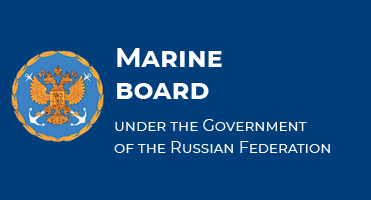Convoy of Vessels in Chukotka Plans to Resume Movement
On January 7, 2017, Admiral Makarov and Kapitan Dranitsyn icebreakers of FSUE “Rosmorport” and Sinegorsk and Iogann Makhmastal transport ships escorted by them arrived in the seaport of Pevek. At the time of transition from the western border of the Northern Sea Route (NSR) to the seaport of Pevek (12.17.2016 - 01.07.2017), the escorted bulk-carriers fully met the technical parameters for arctic navigation, had all the necessary permits for navigation in the water area of the Northern Sea Route.
The main object of the convoy was the delivery of cargo comprising elements of the engineer construction for the floating nuclear thermal power plant to the seaport of Pevek. Icebreakers and vessels have successfully completed the assigned task.
Currently, for the bulk carriers to continue their further work in accordance with the plans of their ship-owners, icebreakers need to ensure their passage eastward through the ices before entering the clean water.
The FSUE “Rosmorport” field office, formed before departure of vessels convoy to the NSR, carries out direct control of the convoy's transition to the NSR water area. The field office performs round-the-clock monitoring of the movement of the convoy, control of Admiral Makarov and Kapitan Dranitsyn icebreakers' operation. For objective study and analysis of hydro-meteorological and ice conditions, the field office uses all the available means: hydro-meteorological forecast, satellite image of navigation area, interaction with experts of Arctic and Antarctic Research Institute (AARI), air observation (depending on weather conditions), Internet resources with forecast data for ice pressure and ice compaction, exchange of information with the masters of icebreakers.
From January 13, 2017, having completed cargo discharging, the convoy was ready to move. However, due to changes in hydro-meteorological conditions (primarily wind direction), ice conditions at the exit of the Chaun Bay of the East Siberian Sea suddenly changed to the worse. Further icebreaker support would be associated with serious risks of damage to these vessels because of the strong ice drift and pressure.
It must be considered that such ice conditions are common in the Arctic region for this time of year. For this reason, the escorted vessels have been left in the ice drift in a safe place to wait for improvement of ice conditions. In this case, the analogy can be drawn with the navigation of vessels on clean water in storm conditions, when vessels wait out the storm in the protective port as much time as needed for the storm to go down.
At the moment, Admiral Makarov and Kapitan Dranitsyn are carrying out ice reconnaissance and determining the possibility of escort of vessels through the zone of heavy ice blocking the path of the caravan. At the exit of the Chaun Bay hummocking has been recorded, consisting of regelated land ice fragments and forming an extensive barrier from 1 to 4 miles wide.
Round-the-clock satellite telephone communication is maintained with the icebreakers' masters: crews of all vessels of the convoy are in safety, vessels are provided with food supplies.
According to the latest hydro-meteorological forecast data, there is a slight favorable dynamics of the ice conditions: the wind changed its direction to the southwest, which may give some weakening of the ice compression and increase the chances of a smooth exit of the convoy from Chaun Bay for further movement to the east.
For reference:
For more than 10 years the icebreakers of the FSUE “Rosmorport” have successfully been working in the Northern and the Arctic regions, including the water area of the NSR, directly taking part in the implementation of many complex infrastructure and scientific-research projects in the Arctic.
In particular, the icebreakers of the enterprise provide icebreaker assistances to vessels on the line Yenisei Gulf – seaport of Dudinka, safe navigation of vessels in the area of the seaport of Sabetta under construction, icebreaker assistances to vessels delivering cargoes to unequipped catter of Frantz Josef Land Archipelago, as well as towing operation and vessels escort in NSR waters in summer and autumn time.
Masters of the icebreakers of the enterprise, working in the Arctic and in the water area of the NSR have many years of experience of going through the most difficult routes of the Arctic and are fairly considered unique representatives of the profession, having the merited reputation in the fleet.
One of the main personal qualities of the masters of icebreakers is the ability to make independent and informed decisions in the most abnormal situations.
Aleksandr Erpuliov, the master of Kapitan Dranitsyn icebreaker is a brilliant representative of this category of navigators, who has not only experience in the diesel icebreakers, but also in long-time navigation of nuclear-powered icebreakers. In 2009, thanks to his professional skill of the captain of the icebreaker, it was possible to gain control and to prevent the development of an emergency situation at the Varandey Oil Export Terminal in the southeast of the Barents Sea.. By controlling the icebreaker Kapitan Nikolaev of the FSUE “Rosmorport” Murmansk Branch, he was able to provide successful icebreaker escort of new ice-class tankers to the marine terminal for loading of crude naphta in heavy ice conditions.
Alexander Stelmakh - the master of the icebreaker Admiral Makarov, is also one of the most influential masters of icebreakers of this class. With over twenty years of experience of work on diesel icebreakers, he has participated in the most difficult of Arctic expeditions, providing icebreaker support for transport vessels.


















